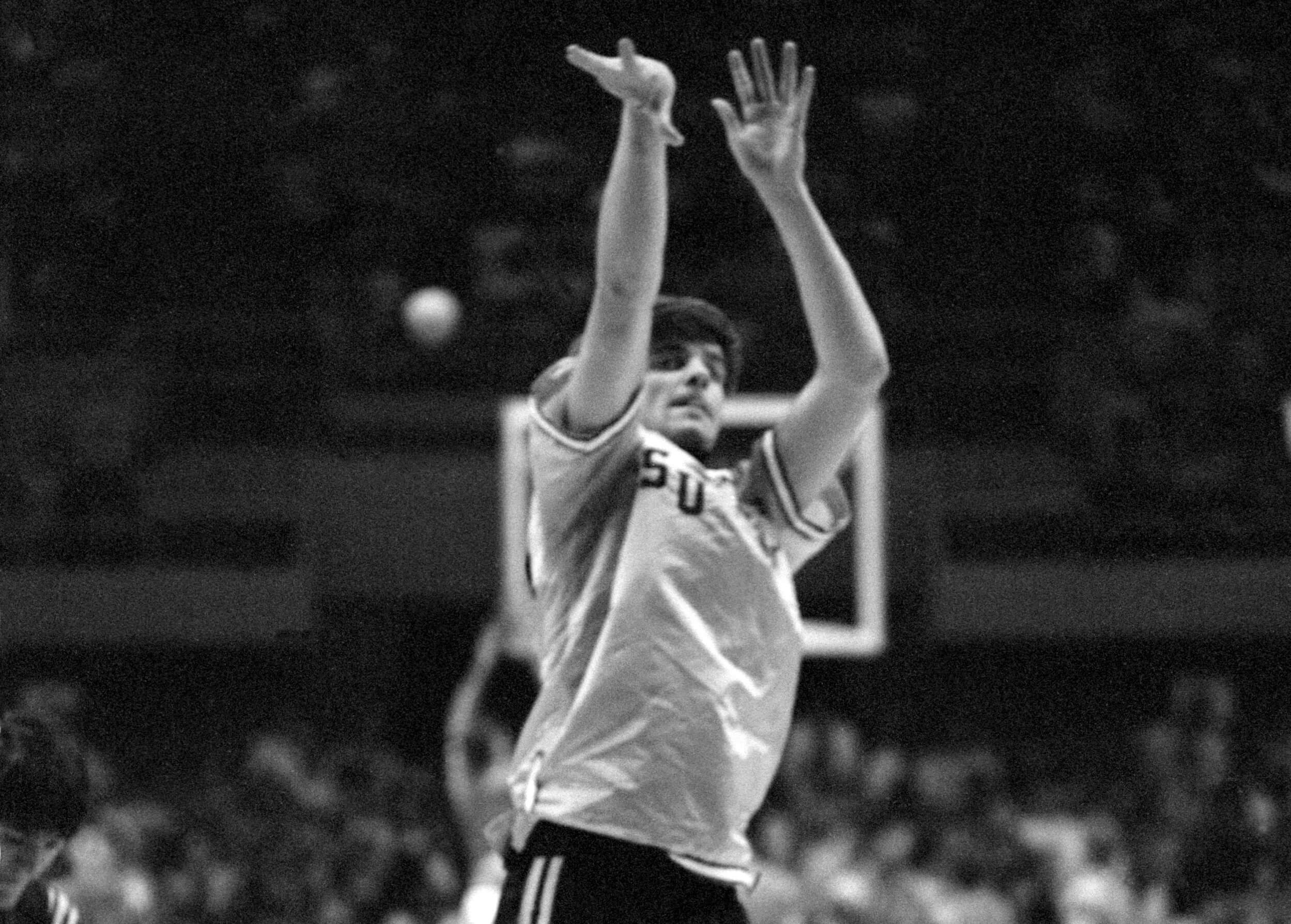NCAA
What Was It Like to Play With Pete Maravich? Pistol Pete's Former LSU Teammate Ralph Jukkola Gives Some Insight

Many consider Pete Maravich the best NCAA basketball player ever. The former LSU star averaged 44.2 points over his three-year college career. He was must-see basketball.
While he was a must-see, there were also four other players on the team. What was it like playing with Pistol Pete, who put up nearly 40 shots per game? Ralph Jukkola, who played two seasons with Maravich, gave some insight to Sports7 this week.
Pete Maravich was the college basketball player everyone wanted to see

Pete Maravich put up numbers like no other. In his first year at LSU as a sophomore (freshmen couldn't play at the varsity level then), Maravich averaged 43.8 points per game, and his numbers only got better each year. As a junior, he averaged 44.2 points, and then he put up 44.5 as a senior. He finished his three-year college career with 3,667 points, a record that still stands 53 years later.
While Maravich put up boatloads of points, he also took plenty of shots, averaging 38 attempts per game. That large number of shots was by design for Maravich, who played for his father, Press, at LSU.
“Press came out one year and said that Pete's going to have to shoot 40 times for us to win,” Jukkola told Sports7 on Wednesday. “That was kind of a downer for us to hear. I think it may have burned some bridges. I didn't like it. It was almost like telling us we ain't worth a darn.”
Jukkola, a 6-foot-3 forward, grew to love playing alongside Pistol Pete. He remembered hearing a lot of buzz about the freshman, so one day he and some upperclassmen went to check out a freshman scrimmage to see what all the hype was about.
“We didn't know who he was,” Jukkola said of the hyped-up freshman. “The freshmen were playing pickup. We were like let's go see what this hot-shot kid is all about. We saw them standing there and couldn't figure out which one he was. There was this kid about 155-160 pounds, skinny kid. Is that him?
“Then when you play against him or play with him, you find out what he can do. He was legit. His talent was above and beyond what we had.”
Jukkola praised Maravich's play-making skills
Jukkola was no slouch. He was undersized for a forward, but he averaged 9.1 points and 7.7 rebounds in his three seasons at LSU. The team struggled to a 3-23 record in his first year. Maravich and his father then came on board the following season and helped turn the program around, although Jukkola nor Maravich ever made the NCAA tourney. Jukkola is a member of LSU's All-Decade Team for the 1960s.
While Maravich shot a lot, he did it at an impressive 44% clip. Jukkola believes Pistol Pete was a better playmaker than shooter.
“Personally, I think he could've shot less and still put up all those points,” he said. “He was such a good ball-handler and playmaker. He controlled the ball and had first choice of where it went.
“I think he was a better passer than shooter, and he could shoot. After you play with him, you realize he developed some shots as he was shooting.”
Although Maravich, who died in 1988 at age 40 while playing pickup basketball, was a legitimate superstar, Jukkola said success never got to his head.
“When you're that good, you gotta have a little bit of an ego,” Jukkola said, “but he was not a cocky kid. He was actually laid back. I think there were some times when the pressure may have gotten to him a little bit.”
Jukkola said he enjoyed playing with Maravich, who always wowed crowds with his flashy behind-the-back or no-look passes.
“I never looked at him as a hot dog or anything like that,” Jukkola said. “Playing with him was fun. He was probably the first tall (6-foot-5) ball-handling guard. Today that's normal, but back then most of the time if you were 6-5 and above, you'd be under the boards.
“He was a great guy. He held camps in the summer and really interacted with the kids that came and stayed there the whole camp. Basketball was when he was in his element.”











